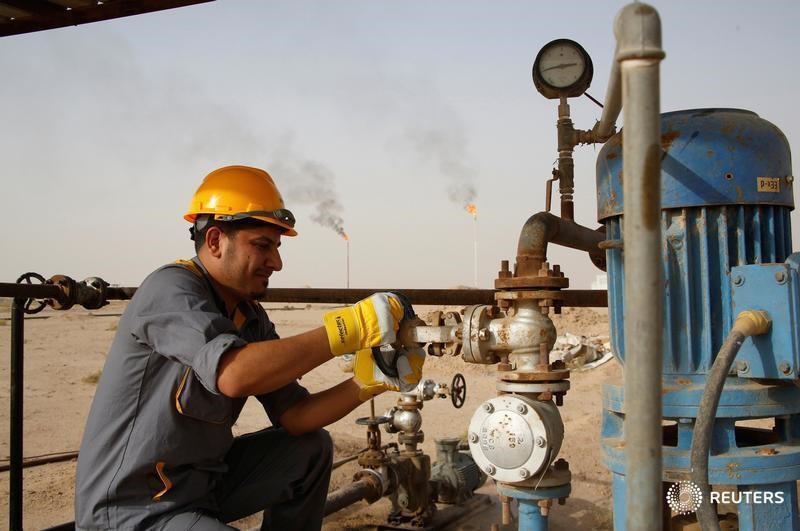By Barani Krishnan
Investing.com - It’s risk aversion all over again, and oil fell as investors dumped assets across the board. A contraction in U.S. factory activity heightened recession fears from the U.S.-China trade war.
As U.S. markets reopened from the Labor Day holiday, more woe awaited crude longs, with New York-traded West Texas Intermediate settling down $1.16, or 2.1%, at $53.84 per barrel.
London-traded Brent crude, the benchmark for oil outside of the U.S., slid 40 cents, or 0.7%, to settle at $58.26, remaining well below the key $60 per barrel level.
The Institute for Supply Management said its manufacturing index fell to 49.1, compared with a consensus reading of 51.1 according to forecasts compiled by Investing.com.
The weak data also weighed on U.S. Treasury yields, with the benchmark 10-year yield falling to its lowest since July 2016. Stocks on Wall Street tumbled, with shares of banks, typically pressured in a low interest rate environment, taking a hit.
“It seems to me that the market goes down much more easily than goes up as I think that the investor community is not a buyer of oil due to the demand-side issues in the market, while the average oil trader is spending time trading spreads,” said Scott Shelton, energy futures broker at ICAP (LON:NXGN) in Durham, N.C.
August was a rough month for crude, with WTI losing almost 6% and Brent more than 7% due to an escalation in the U.S.-China tariffs battle.
By itself, the onset of September marks a seasonally weaker period for fuel demand as the peak summer driving period ends. But other key factors have worsened sentiment lately, among them the lack of Russian cooperation to OPEC production cuts.
Russian Oil Minister Alexander Novak admitted on Friday that Moscow's production cuts fell short of what it promised OPEC, dropping a bombshell on last week’s rally in crude.
The Russian admission came as a Reuters survey showed that OPEC oil output increased in August for the first time in 2019. But that survey only cited higher supply from Iraq and Nigeria, since Russia remains an ally of OPEC, not a member. OPEC pumped 29.61 million bpd this month, an increase of 80,000 bpd from July, according to the survey.
But not everything is bad for oil. Data from the U.S. Energy Information Administration last week showed a massive, unexpected 10-million-barrels-plus weekly drawdown in inventories for the week ended August 23.
While crude draws should thin out from the start of September, there is also the possibility they could remain strong for a while. For instance, in the penultimate week of August 2018, the EIA reported a crude drawdown of 5.8 million barrels. In the following four weeks, U.S. stockpiles continued to see declines, losing a cumulative 14.2 million barrels.
Conflicting drivers for real and implied oil demand have led to huge market swings in recent weeks. Last week, particularly, WTI opened the first session 1% down, then rallied about 2% or more on each of the following three days before plunging almost 3% as the weekend loomed. The end result was a gain of almost 2% on the week and a 6% drop on the month, the worst monthly performance since May.
For the year, WTI remains up almost 19% while Brent is about 8% higher.
